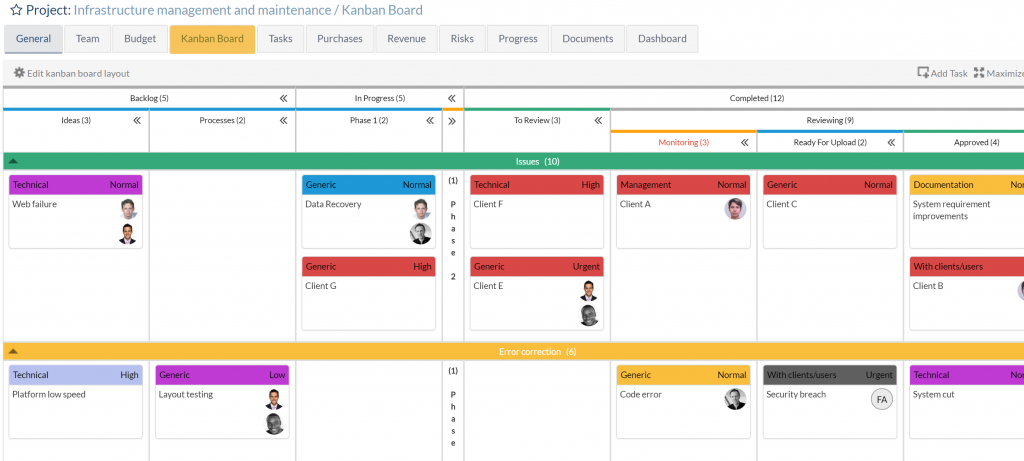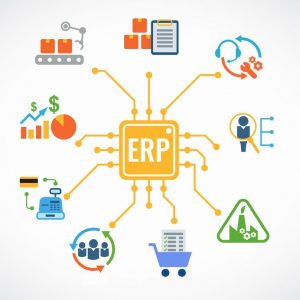 Agile is a flexible way of working in which an enterprise facilitates its people to work where, how, and when they want – with high resilience and fewer constraints – to boost up their performance and provide “best in class” value with customer compliance. It uses information technology and communications to allow people to fit their needs without traditional ideas of when and where tasks must be completed. It depends on the idea that work is an activity we do, rather than a place we go.
Agile is a flexible way of working in which an enterprise facilitates its people to work where, how, and when they want – with high resilience and fewer constraints – to boost up their performance and provide “best in class” value with customer compliance. It uses information technology and communications to allow people to fit their needs without traditional ideas of when and where tasks must be completed. It depends on the idea that work is an activity we do, rather than a place we go.
Advanced tools sustain this new model and allow to cater customer demands, minimize costs, improve sustainability, and increase productivity.
What are the goals of agile work?
The key selling point of an agile work model is that agile is a win-win situation. It offers various benefits to both employers and employees, which are covered in the next section. This is much more than just making people’s lives more comfortable and flexible: ultimately, a scalable work model can achieve results that are hard to achieve in traditional work environments.

But what are the goals and results of implementing agile methodologies in your workplace?
Wider adaptivity: The entire organization is empowered to be much more flexible and responsive to changing needs and situations when team members are not bound to location or fixed office hours. For instance, if employees are based at multiple time zones, it becomes easier to give extended support hours to clients or work around the clock to complete a deadline.
Employee productivity: When businesses measure performance by activity and output, rather than on the time physically spent at a desk, workers become motivated to spend their time on critical tasks that meet organizational goals, improving their schedules at times when their energy and personal productivity are high.
As per recent studies, location-independent employees are more productive and elated compared to their on-site counterparts. And when employees are relaxed and engaged at work, this develops a feedback loop that leads back high organizational performance and responsiveness: when employees get more done, they tend to be actively empowered by management –the entire company benefits. Agile Training helps you learn to implement Agile in a better way across your organization.
The Employers Network for Equality & Inclusion (ENEI) describes in its guide to agile working: “The place where employees have the autonomy and empowerment to choose when and where they work, a culture is fostered that eliminates artificial measures of success, for instance, time and attendance, while the focus is on performance and results.”
Further, according to ENEI not every position can be adapted into agile flexibility. In fact, most jobs can’t incorporate flexibility on all four categories: time, source, role, or location/production mode.
Benefits of Agile Project Management
The use of agile methodology with a web or app project is generally about collaborating with new customers, but it also accelerates productivity and improves quality. Additionally, the agile methodology has many advantages to offer to project management.
Here are the most important benefits:
Collaboration: Customer compliance is one of the most important parts of an agile project management team. By updating the clients on the progress, working on their feedback and prioritising workflow according to their requests will ensure that the client ends up being satisfied. Team management software can also help throughout the process.
Time Saving: In an agile project, the team divides the project into small “sprints”, which usually need to be done within two weeks. This helps the team prioritize small important tasks and deliver them in less time. The time saved can be spent on secondary items that improve product quality.
Faster Results: After each sprint and before going into the next sprint, the team will take breaks to test their work and then go back to fix any bugs, take customer feedback and perform changes,. Agile is not only focused on faster development; it also aims at maximizing quality.
Highly Flexible: With agile, it’s never too late for change. When a client demands an important modification in the product design or data architecture, the team will work on small iterations of a minimum viable version with the new features. In contrast, change requests at the last stage in production can shatter a waterfall project.
Hybrid: Combination of Waterfall and Agile
Agile and Waterfall are well-known visions of software development management.
The former follows the iterative development and is flexible, while the latter is a step-by-step development and needs careful planning.
About twenty-three percent of all companies experienced that using principles of both approaches is more advantageous than choosing one of the two. The traditional Waterfall project management approach and Agile combination are called Hybrid.
Agile adopters are most abundant in software development, but for budgeting, planning, and hardware set up, waterfall can work better. Further, by integrating Agile practices into a traditional Waterfall work processes, enterprises can deliver successful projects early. For instance, project planning is done in sprints, testing can be integrated into the development, and feedback can be taken regularly. You can even modify the Waterfall model, organizing retrospectives with the use of Kanban boards towards a hybrid model.
It is important to note that the choice of hybrid framework’s features may vary from project to project. Hybrid frameworks not only include using both approaches according to the project phase, but also involve options to embed Agile practices into a Waterfall process.



 In every career, there’s a range of qualities and personality traits that can make or break your success. Project management is no different—and there are certain characteristics that project managers need to have in order to meet proficiencies in various industries. With the help of a useful software that
In every career, there’s a range of qualities and personality traits that can make or break your success. Project management is no different—and there are certain characteristics that project managers need to have in order to meet proficiencies in various industries. With the help of a useful software that  As a warm-up to our upcoming webinar, we discuss with Mats Malmström the importance of project value and project culture, and how they sometimes get thrown in as an afterthought. Mats is owner of LYM Consulting and a multi-talented management consultant with more than 25 years of experience as executive sponsor, program and project manager.
As a warm-up to our upcoming webinar, we discuss with Mats Malmström the importance of project value and project culture, and how they sometimes get thrown in as an afterthought. Mats is owner of LYM Consulting and a multi-talented management consultant with more than 25 years of experience as executive sponsor, program and project manager.

 Many people are discovering that working from home is a great advantage, and companies are inclined to agree. Hiring a contractor over an employee, and using that employee to build a virtual team for projects, is advantageous in a number of ways:
Many people are discovering that working from home is a great advantage, and companies are inclined to agree. Hiring a contractor over an employee, and using that employee to build a virtual team for projects, is advantageous in a number of ways: